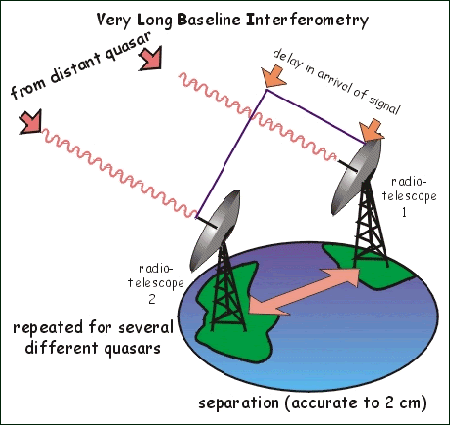Very Long Baseline Interferometry (VLBI)
Using ORT and telescopes in the UK, Netherland, Poland, and USSR, the first very-long baseline interferometric observations from India were carried out successfully in 1983.
VLBI is a technique based on multiple radio astronomy telescopes on Earth, at which the signals from very distant astronomical radio sources, such as quasars, are collected simultaneously and processed. Very Long Baseline Interferometry – VLBI – is a phenomenally complex but powerful tool. By linking together radio telescopes from around the world, astronomers can see the Universe in unprecedented detail. VLBI networks have studied exploding stars and powerful gas jets driven by supermassive black holes in the hearts of galaxies. And that same technology lets us peel away the inner structure of our planet and determine our orientation in space.

VLBI Technique
For example, by using atomic clocks, which provide excellent time and frequency standards, ORT has been used to do very long baseline interferometry (VLBI) by combining the radio waves received by them with those received by radio telescopes in West Germany, Holland, England, Japan, Poland, China, and Russia. This has enabled celestial objects like radio galaxies and quasars to be observed with very high resolution, equivalent to that obtained by a telescope with an aperture size of about 5000 km.
Since the telescopes don’t need to be physically connected, the sky is truly the limit in terms of telescope placement. Imagine placing one in orbit around Earth! Or launching a flotilla of radio telescopes into space to work as a single interferometer several times larger than our planet. And if you really want to dream big, why not place some telescopes on the Earth while placing others on the far side of the Moon? You would then have a quarter of a million miles wide radio telescope! The resolving power of such a setup would be the equivalent of standing in Los Angeles and reading a newspaper placed in Washington, D.C.
